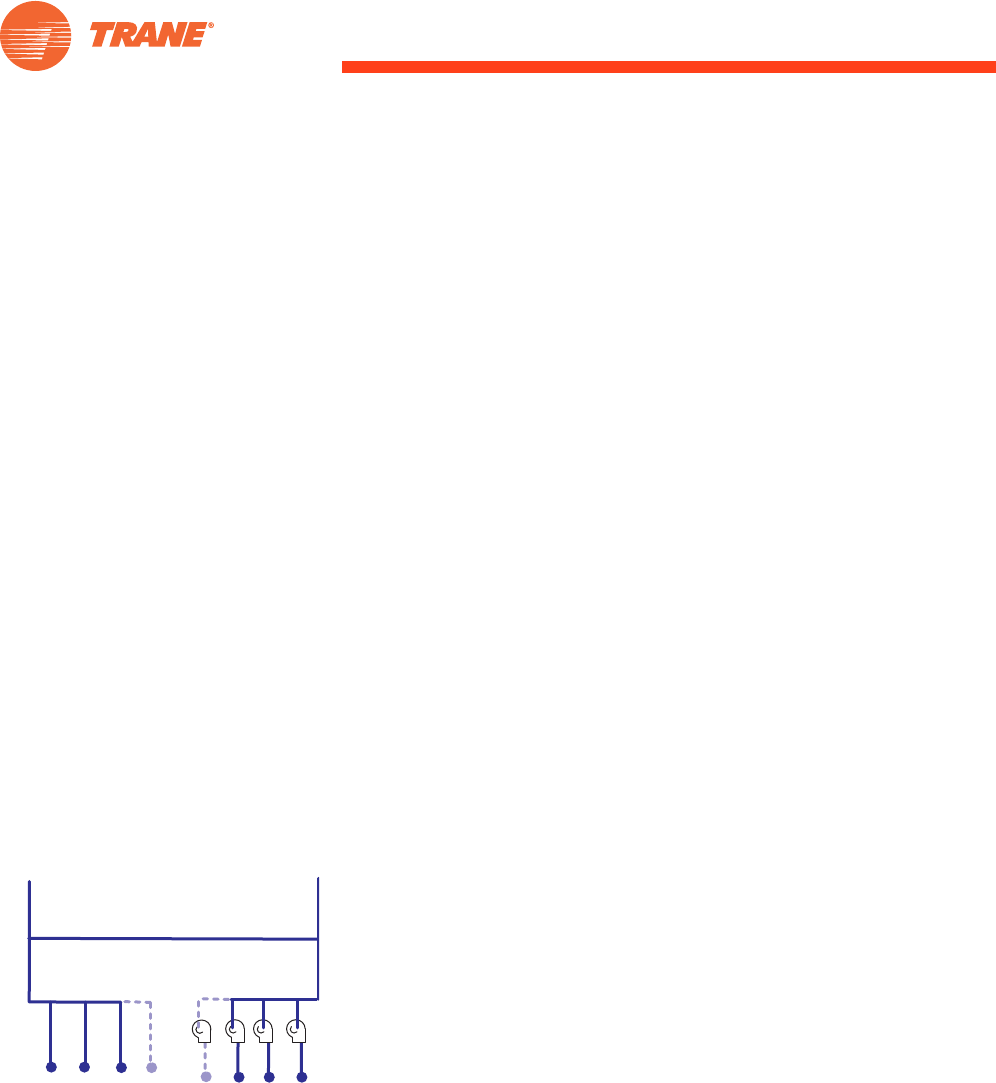
System Configurations
SYS-APM001-EN Chiller System Design and Control 49
Elevated return-water temperatures. Because unused chilled water does not
bypass the cooling coils (two-way, rather than three-way, control valves), all
water that is returned accomplishes some cooling. Theoretically, the return-
water temperature will always be at least as high as it is at full load. From a
practical standpoint, this is not always possible, but it is closely approached
in a properly operating system. In fact, at most part-load conditions, water
returns from properly functioning air-conditioning coils at higher-than-design
temperatures. In systems that use counterflow cooling coils, this occurs
because the water leaving the coil tries to approach the temperature of the
entering airstream.
Warm return water provides advantages in system design. It permits
“preferential” loading of chillers, for example. Warmer return water is useful
with all systems, but particularly so with heat recovery and free cooling
applications. For more information, refer to “Chilled-Water System
Variations” on page 70.
Pumping arrangements
Common
Various distribution system arrangements are possible. A single, large
pumping station, as shown in Figure 29, can be used. The station may consist
of single or multiplexed pumps sequenced on or off.
Campus
Alternatively, each of several secondary distribution systems can be piped in
parallel. For example, Figure 32 shows separate distribution systems for each
of three loads. Clearly, this arrangement lends itself to the possibility of plant
expansion by simply adding secondary distribution pumps to the existing
plant.
Tertiary or distributed
Tertiary pumping is an extension of primary–secondary pumping when the
distribution or secondary pump must overcome diverse and severe pumping
requirements.
System loads can also be decoupled from the secondary distribution system.
This is frequently done with very large systems. Figure 33 shows one method
of providing “tertiary pumping” at the loads. A “load” may be something as
large as an entire building, or as small as an individual cooling coil. When
one or more loads have extreme head requirements, the degree of range
ability of the distribution pump is severely curtailed. Tertiary pumping allows
the excess pumping requirements to be placed on a third pumping system
thus shielding the distribution pump from divergent pressure requirements.
Most importantly, the loads must be controlled so that only the water needed
to perform cooling is taken from the distribution loop. Water must not be
allowed to flow into the return piping until it has sustained a specific
temperature rise. Tertiary pumps can be either constant flow or variable flow,
to best meet the terminal load requirements.
Secondary Distribution
Pumps
Figure 32. Campus pumping
arrangement
